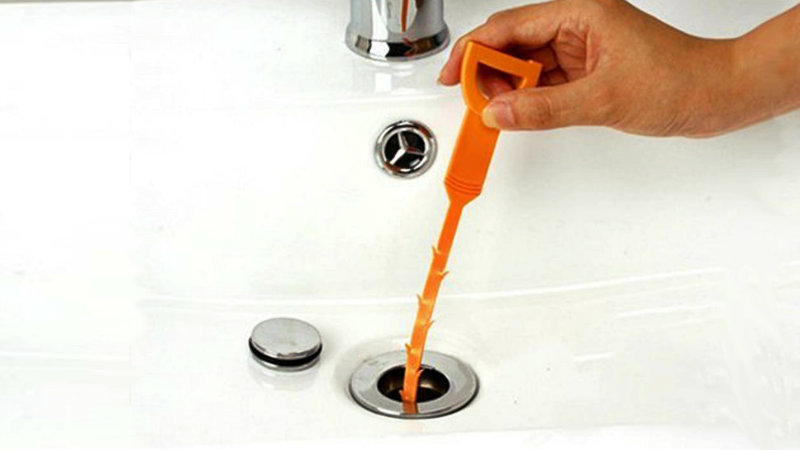If you’re reading this, chances are you’ve encountered the frustrating issue of a clogged bathtub drain with standing water. It’s a common problem that can put a damper on your daily routine, and you’re not alone in seeking a solution. In this comprehensive guide, we’ll dive deep into the causes behind this issue and explore effective methods to tackle it head-on. So, let’s roll up our sleeves and get that water flowing freely again!
Understanding the Anatomy of a Bathtub Drain
To address the problem of a tub not draining properly, it’s essential to understand how the drain system works. Your bathtub drain consists of several key components, including:
1. The Drain Stopper
The drain stopper is the part you see in the tub, and it’s responsible for blocking water from flowing down the drain. It can be a simple rubber plug or a more intricate mechanism, like a pop-up stopper. Sometimes, these stoppers can accumulate hair, soap scum, and debris, leading to drainage issues.
2. The Drain Pipe
Beneath the drain stopper lies the drain pipe, a curved section designed to hold water. This “P-trap” prevents sewer gases from entering your home. However, it’s also a common location for clogs to form due to its shape.
3. The Overflow Drain
Located just below the tub’s rim, the overflow drain prevents overfilling by diverting excess water back into the main drain. This can also become a point of congestion if not maintained.
4. The Main Drain Pipe
Finally, all the water from the bathtub drains into the main drain pipe, which carries it away from your home. This pipe can become clogged due to a variety of factors.
Common Causes of Bathtub Drain Clogs
Now that we’ve dissected the components of your tub’s drainage system, let’s explore the common culprits behind a slow or non-draining bathtub.
1. Hair Accumulation
One of the most prevalent causes of bathtub clogs is hair buildup. Over time, strands of hair can collect in the drain, combining with soap scum to create a stubborn blockage. It’s like a traffic jam for water!
2. Soap and Residue
Soap is an essential part of our daily bathing routine, but it can also be a major contributor to drain clogs. Soap scum can accumulate on the walls of the drain pipe, reducing water flow.
3. Foreign Objects
Sometimes, small objects like jewelry or children’s toys accidentally find their way into the drain, causing immediate blockages. Retrieving these items can be tricky but necessary.
4. Mineral Buildup
Minerals present in your tap water can leave deposits on the inside of the pipes over time. This can restrict water flow and lead to clogs.
DIY Solutions for Unclogging Your Bathtub Drain
1. Use a Plunger
A plunger can be a handy tool for dislodging minor clogs. Create a seal around the drain, then plunge vigorously to create pressure changes that may break up the blockage.
2. Remove the Drain Stopper
Unscrew or pop off your drain stopper to access the drain pipe directly. You can then manually remove hair and debris with a snake or a pair of needle-nose pliers.
3. Chemical Drain Cleaners
Chemical drain cleaners can dissolve soap scum and organic matter, but they should be used with caution due to their corrosive nature. Always follow the manufacturer’s instructions.
4. Natural Remedies
Consider using a mixture of baking soda and vinegar to create a foaming reaction that can help break down clogs. Pour the baking soda down the drain, followed by vinegar, and then flush with hot water.
When to Call in a Professional
While these DIY methods can work wonders for minor clogs, there are instances when it’s best to seek the expertise of a professional plumber. Here are some red flags that indicate a more severe issue:
- Recurring Clogs: If your drain keeps clogging despite your best efforts, it could be a sign of a more significant underlying problem.
- Foul Odors: Persistent unpleasant odors emanating from your drain could indicate a sewer line issue.
- Slow Draining in Multiple Fixtures: If multiple drains in your home are slow to empty, it might be a sign of a larger plumbing problem.
Conclusion
In the battle against a stubbornly clogged bathtub drain, understanding the root causes and employing the right strategies is crucial. Whether you opt for DIY methods or seek professional assistance, remember that timely action is key to preventing further damage and restoring the tranquility of your bathroom oasis.
Don’t let a slow-draining tub disrupt your daily routine any longer. With the right knowledge and tools, you can bid farewell to standing water and enjoy the soothing experience of a smoothly flowing bathtub. So, grab that plunger or pick up the phone and take the first step towards a clog-free future.
